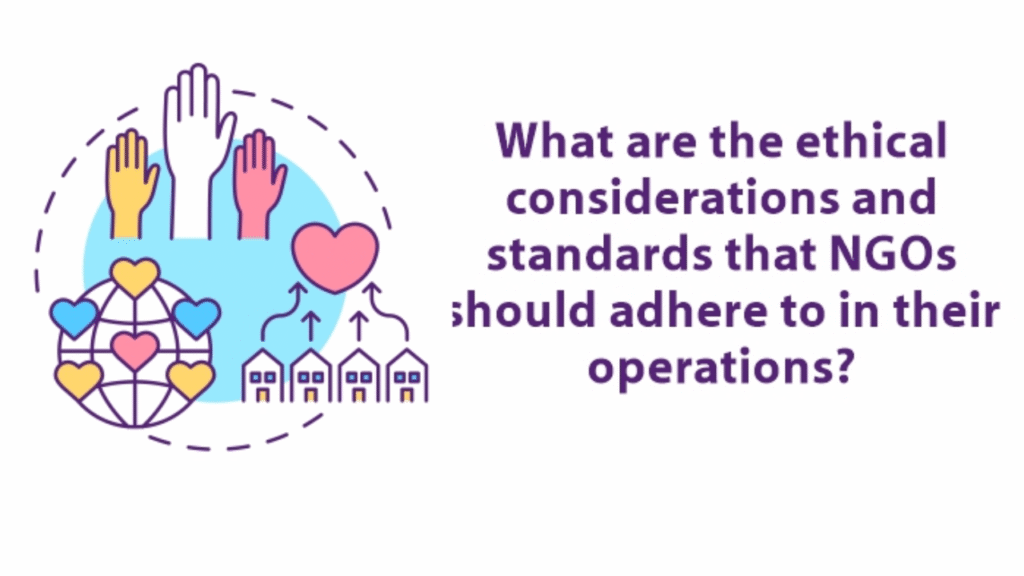
When NGOs lead design interventions—whether it’s housing in informal settlements, public spaces in marginalized neighborhoods, or climate-resilient infrastructure in rural communities—the power they wield can significantly shape lives. However, without firm ethical considerations, even well-intended design can cause harm, displace voices, or reinforce inequality. Ethical design is not simply about aesthetics or functionality—it’s about respect, inclusion, sustainability, and justice.
This article explores the ethical landscape of NGO-led design projects and offers actionable guidance on navigating complexity with integrity.
Overview Table: Key Ethical Domains in Design-Based NGO Work
| Ethical Domain | Core Concern |
|---|---|
| Community Consent | Ensuring projects are co-created, not imposed |
| Cultural Sensitivity | Respecting traditions, identities, and social dynamics |
| Power and Representation | Avoiding top-down decision-making |
| Environmental Impact | Designing sustainably and with future generations in mind |
| Equity and Access | Serving the most marginalized without exclusion |
| Accountability and Feedback | Creating channels for grievances and adaptation |
1. Prioritizing Informed and Ongoing Consent
Genuine community engagement goes beyond a one-time consultation. Ethical design starts with securing informed, voluntary, and continuous consent from all stakeholders.
Best practices include:
- Holding multilingual, inclusive focus groups at multiple project phases
- Offering full transparency on project goals, funders, and limitations
- Allowing communities to veto or reshape interventions
Consent isn’t a checkbox. It’s a process that must adapt as projects evolve.
2. Respecting Cultural Identity in the Design Process
Designs that ignore cultural norms risk being irrelevant—or even offensive. Colors, materials, symbols, and layout choices carry deep meaning in different contexts.
Culturally sensitive design includes:
- Involving local artists, elders, and architects
- Learning the significance of space in rituals or family life
- Avoiding external design aesthetics that erase local character
Design should be a mirror of the community’s values, not an imposition of outside styles.
3. Avoiding Extractive Design and Power Imbalances
When NGOs lead projects in underserved regions, they often hold disproportionate power over decision-making. This can result in extractive practices where communities become passive recipients.
To balance power:
- Elevate local voices to leadership roles in the project
- Share credit for design outcomes and innovations
- Redirect budget toward capacity-building and local hiring
Representation isn’t just about who is consulted—but who is empowered to decide.
4. Ensuring Environmental Ethics and Sustainability
NGO-led projects must also consider their ecological footprint, especially in climate-vulnerable areas.
Strategies for environmental ethics:
- Use locally sourced and renewable materials
- Assess lifecycle impacts of construction and maintenance
- Incorporate nature-based solutions for climate resilience
- Plan for end-of-life deconstruction or reuse
Design must serve people and protect the planet for future generations.
5. Designing for Inclusion and Equity
Ethical design ensures no one is left out, especially in settings with historic marginalization based on caste, race, gender, or disability.
Checklist for equity:
- Design entrances, toilets, and public spaces for accessibility
- Create safe spaces for women, LGBTQ+, and minority groups
- Engage people with disabilities in the design process
- Distribute benefits equally across socioeconomic groups
The question to ask: “Who benefits—and who’s been forgotten?”
6. Building Accountability Mechanisms
Accountability is ethical design’s backbone. Communities need safe, trusted channels to raise concerns or challenge outcomes.
Approaches:
- Establish local grievance redressal boards
- Use participatory monitoring and feedback loops
- Offer open-data access for budget, timeline, and impact tracking
- Conduct independent evaluations from non-aligned experts
Ethics aren’t protected by intention—they’re upheld by systems.
Table: Examples of Ethical vs. Unethical Design Practices
| Design Element | Ethical Practice | Unethical Practice |
|---|---|---|
| Community Engagement | Ongoing co-creation with diverse voices | One-time consultation or outsider-driven decisions |
| Cultural Design Choices | Integrates local materials and traditions | Imposes external architectural aesthetics |
| Labor Hiring | Prioritizes local skilled/unskilled workforce | Outsources labor with no local benefit |
| Accessibility Features | Universal design principles for all abilities | Designs that exclude disabled or elderly individuals |
| Resource Use | Energy-efficient, low-carbon design | High-impact materials with no local recycling plans |
3 Best One-Line FAQs
1. Why is ethical design especially important in NGO projects?
Because NGOs serve vulnerable communities, unethical design can cause deep harm despite good intentions.
2. How can NGOs ensure their design is community-led?
By shifting from consultation to co-creation—letting local people shape decisions and outcomes.
3. What tools can support ethical monitoring in design work?
Community scorecards, anonymous feedback channels, and third-party audits can help uphold ethics.
Conclusion
Design interventions by NGOs have the power to transform lives—but without an ethical compass, they can just as easily entrench harm. By centering community agency, respecting local culture, minimizing environmental impact, and promoting equity, NGOs can deliver design that uplifts, not overrides.

